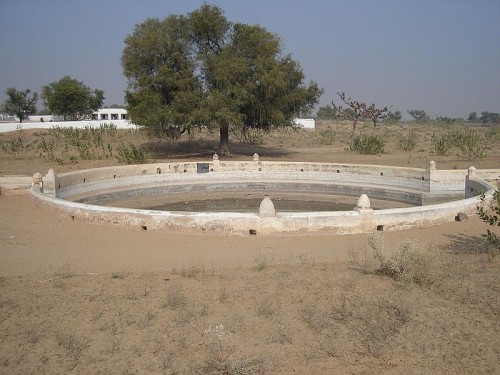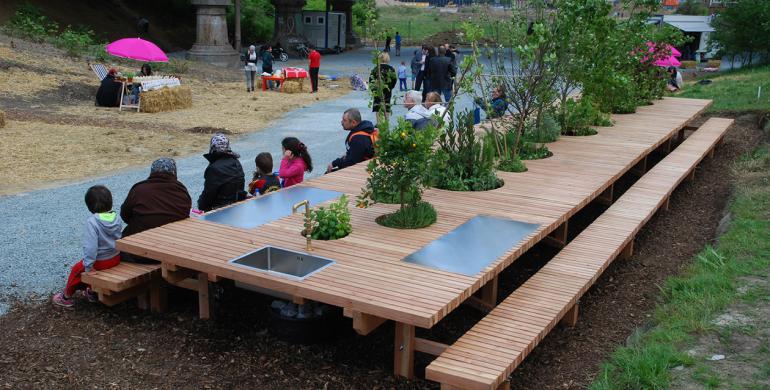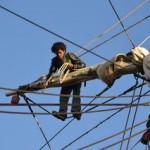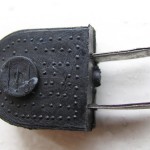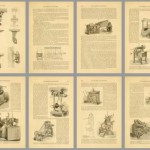The least fit ten-year-old English child from a class of 30 in 1998 would be one of the five fittest children in the same class tested today. Read more: Poor fitness is a bigger threat to child health than obesity.
Water Johads: A Low-Tech Alternative to Mega-Dams in India
When the British colonized India, they imposed their own system of water management, which included the building of large-scale dams, sewers, and irrigation channels. This high-tech approach continues today, as the World Bank is urging India to build enormous dam projects to fight drought and depleted aquifers. The Indian government has followed its advice. Its first Prime Minister, Jawaharlal Nehru, called dams the “Temples of modern India”. Since then, India has built over 5,000 dams and large reservoirs. [1]
However, before the British arrived, people on the subcontinent used traditional low-cost, low-tech engineering to collect rainwater for thousands of years. This involved the placement of thousands of small structures throughout rural areas which, in one way or another, catch excess rainwater from the monsoon months and allow it to slowly percolate into the groundwater during the dry season. To maintain and manage these structures, community-based management schemes were necessary. However, these were actively discouraged during British rule and following independence. As a result, in the 20th century many of these small reservoirs fell into disrepair.
A Ladder to Heaven
A Dining Table for the Neighbourhood
The Landscape Table is a platform for cultivating, processing, cooking and sharing the food at the centre of the FARMPARCK in Brussels, Belgium. Thanks to the edible and medicinal plants inserted into the table itself, the installation invites the public to meet and eat in direct contact with a landscape that is a bounty for the senses – sight, smell, touch and, above all, taste. The essence of this project is to involve the visitor in the landscape, farming, nature and cooking through shared moments.
FARMPARCK puts to the test a new model for a public space combining the characteristics of a park and farmland, where food is grown, cooked and eaten by the neighbours. There is a vegetable garden, an animal farm, a kitchen, and a compost toilet which is to transform the park’s organic waste into “terra-preta” (black earth, a rich and fertile soil) for the park and the surrounding area. FARMPARCK, which happens in a multicultural neighbourhood, meets both social and ecological needs. It was set up as a prototype from May to September 2014, but continues to be active today. Picture: Eric Dil.
Micro Break: The Fast, Efficient Holiday
 As mini-break holidays become ever more popular, now is the perfect time to launch a new concept in today’s fast moving, time strapped world, the Micro-break. Simply sit on the chair and the carpet tips and rocks as you watch a TV animation of your flight and coach transfer, ending up on a tropical beach. At this point the TV lamp swings up, shining a heat lamp in your face. After soaking in the heat, you’re whisked home again, the whole experience lasting less than 3 minutes.
As mini-break holidays become ever more popular, now is the perfect time to launch a new concept in today’s fast moving, time strapped world, the Micro-break. Simply sit on the chair and the carpet tips and rocks as you watch a TV animation of your flight and coach transfer, ending up on a tropical beach. At this point the TV lamp swings up, shining a heat lamp in your face. After soaking in the heat, you’re whisked home again, the whole experience lasting less than 3 minutes.
Microbreak was my first attempt at making a simulator ride and also my first attempt at 3D animation, so it was particularly exciting. It’s also my favourite because I really struggle with real holidays. Holidays are essential for people who have stressful jobs or hate their jobs. But I enjoy working and don’t find it stressful. I like travelling for work, to have a reason to go somewhere, but find holidays more stressful than work and often thoroughly depressing.
 This simulator ride is built on the chassis of a 1985 Sega Space Harrier arcade game. This provides the wonderful tipping and rocking mechanism. The animation is filmed in a model landscape made of weathered lumps of PU foam, which originally came from a float used to lay a north sea gas pipeline.
This simulator ride is built on the chassis of a 1985 Sega Space Harrier arcade game. This provides the wonderful tipping and rocking mechanism. The animation is filmed in a model landscape made of weathered lumps of PU foam, which originally came from a float used to lay a north sea gas pipeline.
Written by Tim Hunkin.
Micro Break is on display at Novelty Automation, a new London arcade of Tim Hunkin’s home-made machines. All machines are introduced on the website, but if you’re in London we suggest you just head over to 1a Princeton Street (a 5 minutes walk from Holborn station) and suprise yourself.
What Can Be Learnt From a 17th Century Town
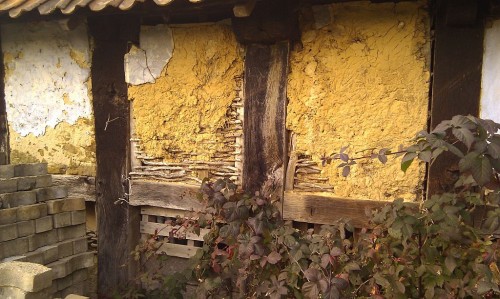 “In Plymouth, Massachusetts — the site of the first English colony in America — Matteo Brault spends his days living a 17th century life, along with dozens of other re-enactors on the modern-day Plimoth Plantation. Brault works full-time as a 17th-century style blacksmith, using traditional tools like a grindstone, hand-made nails and a large bellows for making the fire hot enough for forging iron and steel. He also helps build the traditional shelters.”
“In Plymouth, Massachusetts — the site of the first English colony in America — Matteo Brault spends his days living a 17th century life, along with dozens of other re-enactors on the modern-day Plimoth Plantation. Brault works full-time as a 17th-century style blacksmith, using traditional tools like a grindstone, hand-made nails and a large bellows for making the fire hot enough for forging iron and steel. He also helps build the traditional shelters.”
“The simplest homes in town were built using cratchets — natural forks in trees — as support for the ridgepole of the roof. The walls are built up with “wattle” — small sticks for the lattice structure — and “daub” — a mortar of clay, earth and grasses. Instead of using the traditional English lime wash to protect the walls, the colonists took advantage of the plentiful wood in the America and created clapboard siding by cleaving wood into thin boards. For the thatch roofs, large bundles of water reed or wheat straw are woven with a giant needle by two people working in tandem (one outside and one inside). “It’s like a giant quilt made of grass,” explains Brault, “which makes a water-tight roof that essentially acts as a giant sponge. It absorbs water and laps it off.”
Watch the video. Picture: a wattle and daub wall in Germany.
